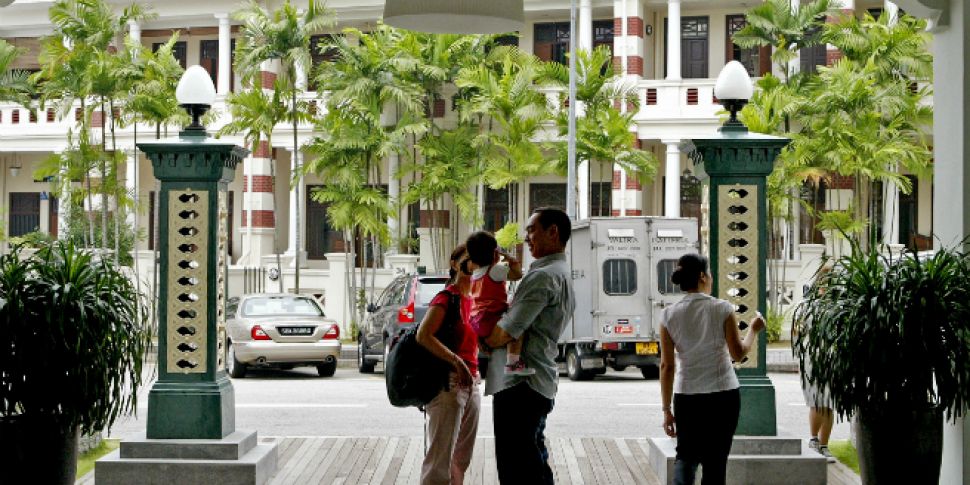Ireland is deep in the throes of a fully-fledged housing crisis, of that there is no doubt. A lack of bank lending and a pronounced paucity of supply despite buildings lying idle around the land are just a couple of the causes that have been pored over at length, as the conversation continues with no clear solution in sight. We’ve had summertime action plans and the right words from the likes of Minister Simon Coveney, but the property market remains sick, with the side effects of homelessness and skyrocketing rent only worsening.
With domestic talk ran into the ground, it might be an idea to take a deeper look at the crisis and try it out on the complete opposite side of the globe. There must, you’d imagine, be places out there that have successfully come through this before?
Turns out we might have to look, if not as far as Ireland’s exact antipode, then pretty darn close.
Dr Lorcan Sirr, DIT’s resident housing expert, has bemoaned how reluctant our politicians have been to learn from other jurisdictions. So with that in mind, let’s take a look at one of the finest example of a small nation digging itself out of a property hole: Singapore.
The Singapore Story
A former British colony of some 5.4 million people sat between the Indian Ocean and South China Sea, The Lion City has the distinction of being the world’s only island city-state. It’s also pretty unique in how it not only has a history of solving a post-independence housing crisis in textbook fashion, but has swiftly dealt with a threatening property bubble in more recent times.
In the mid-1950s, Singapore was free and in dire straits, with people living in rundown residences which politician and writer Edith Sommerskill compared to “human warrens”. Its population has since trebled, and over 80% of its citizens now in government-built housing (90% of which are owned by the residents) and homelessness almost eradicated.
The government had taken strong, decisive action in the ‘60s, enforcing compulsory purchase orders, capping land prices and establishing bodies with the legal support to ensure they could deliver houses quickly.
With that proactive attitude ingrained, and the Housing & Development Board (HDB) established as something of a pillar in society, Singapore didn’t panic when property prices climbed 40% between 2009 and 2013. Instead it made short shrift of the bubble and has calmly cooled the market down.
To figure out how, and whether its approach could be transposed to Irish shores, we turn to Singapore-based Kiwi economist Dr David Skilling, who has long reckoned that his current abode could teach New Zealand and other small, advanced economies plenty when it comes to property.
“The policy response has operated on both the demand and supply side,” Dr Skilling says.
“On the supply side, it aggressively builds public housing for citizens with an expectation that people buy them – ownership rates are above 80%.
“This is a version of an affordable housing programme. The supply of these houses is meant to keep ahead of demand, and there has been an active construction process over the past several years – which is done at-scale and so is relatively cheap. And the government have opened up development blocs for private construction as well at a calibrated pace. The government owns most of the land in Singapore, and calibrate the release of land for development). As a consequence, housing supply has surged over the past few years.
“On the demand side, Singapore has been at the front of macro-prudential policy for the past several years to cool the property market, and prices have been falling for the past couple of years.
“They use borrowing limits, stamp duty on investor purchases, and on foreigners... For a foreigner, for example, there is a 15% stamp duty.
“Over the past 18 months, Singapore’s property prices have reduced by a bit over 10% in a gradual decline. The government has indicated that it will continue with this path.”
Though Dr Skilling isn’t terribly au fait with Ireland’s particular brand of calamitous property planning, he believes that Singapore, “despite its many differences with Ireland, is a good example of the type of policy response for Ireland; particularly, the combination of demand and supply side. It has been a successful model.”
He also notes that the country has “policy levers” that the Irish government does not have “such as the Housing & Development Board as a major property developer and land ownership rights”.
Nevertheless, it is an “instructive” example.
“It shows that to successfully moderate growth in house prices, you need to operate on both the demand and supply sides. Lessons can be taken from Singapore."
Instead, as seen this week with the Central Bank's decision to remove the lending rule that first-time buyers are required to have a 20% deposit for properties priced above €220,000, we continue to worry over the demand side of things. Savills economist Dr John McCartney has warned that that particular move will push prices even higher.

Picture by Ray Chua AP/Press Association Images
Bringing it all back home
Those policy levers sure sound handy, don’t they? Dr Lorcan Sirr particularly likes the swift, aggressive approach of the Singaporean authorities, in contrast to the doddering on Irish soil.
“The only solution to the current housing problem,” he argues, “is for the state to become directly involved in building houses.
“It's important to note that this doesn't mean buying or ‘acquiring’ houses, or leasing them, or building by PPP [public private partnership], but actually building houses themselves, like they had traditionally done until the late 1980s.”
Is it feasible, though, for Ireland to ramp up construction directly by following the HBD model?
“It is. It would be eminently possible and advantageous for the state to establish a state building body to commission, oversee and manage housing development alongside local authorities.”
As for dealing with people who continue to sit on land here, Sirr says:
“We tax them until it becomes unviable for them to hold onto their land indefinitely. We also remove the current manifold exemptions to the derisory 3% vacant site levy, so that at least that tax gets applied.”
All of which sounds great, until you consider the mindset adjustment that might be required to make “social housing” attractive on a grand scale.
“Cultural ideas around housing are more challenging to deal with than financial or other delivery issues,” Sirr concurs.
“Like the Dublin Bikes scheme when it was first introduced, social and affordable housing could work here when you see people whom you wouldn't normally expect using the scheme – like business people using Dublin Bikes.
“Security of tenure would need to be beefed up. Many middle income people live in social housing in countries like the Netherlands. It might require a number of bodies other than local authorities to get involved in the delivery of such housing, such as co-operatives. There's no reason a body like An Garda Síochána couldn't form a co-operative to develop affordable housing for their members.”
With vacant builds scattered around the country and decentralisation shown to be a dud, we know that it’s not just a case of sticking up houses. Location continues to be a paramount concern for people and the capital is feeling the strain. Time, then, to abandon our low-rise skyline and start building up?
From an eastern perspective, Skilling is a fan of high-rise living.
“It is one way of ramping up supply quickly – [though] I don’t know what opportunities there are in Dublin for this.”
Not many, Sirr contends.
“I would suggest that getting higher densities might be a more appropriate solution for the Irish landscape. High-rise also becomes expensive after about 10-12 stories, so some cost efficiencies are absorbed by this additional expense. Higher densities through a better use of existing space – getting rid of front gardens, for example – might work better.”
And while Singaporeans owning their own homes is all well and good, Dr Sirr expects that renting will be the reality for many Irish household “for the long-term, if not forever”.
“So this sector needs to be regulated and developed. Regulated rental markets are proven to be the most successful. But to get there you need a government that isn’t afraid of challenging the multifarious property interests.”
The cure to our housing malady is out there. A bit of bravery – long since lacking – is what's required.









